1936 Story and Clark Spinet
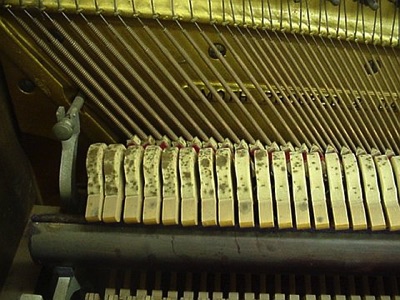
This early spinet piano was rescued from the back of a country church.
Mildew attacked the bass hammers due to excessive humidity where the piano was stored.
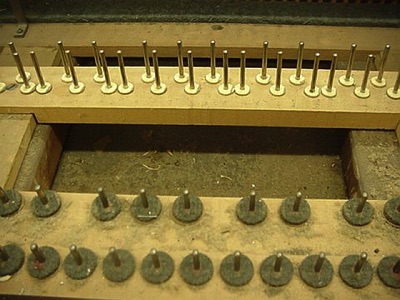
Key beds accumulate dust and debris over the years.
Fragments of sheet music and paper clips are the most common obstacles.
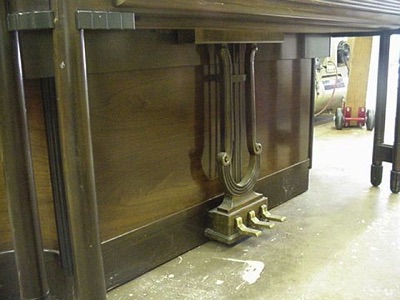
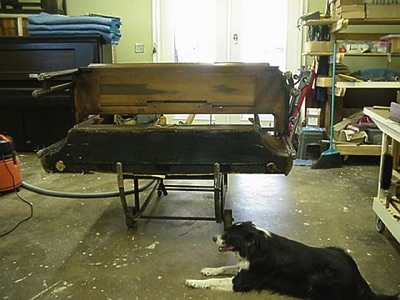
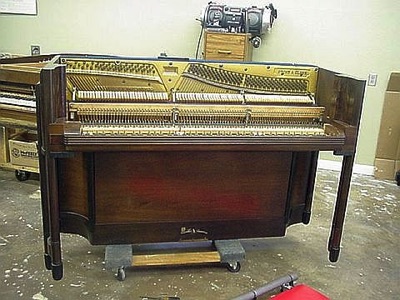
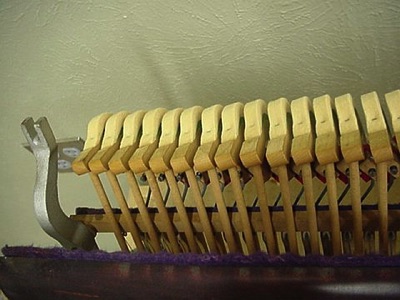
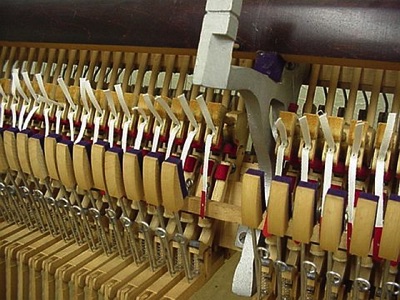
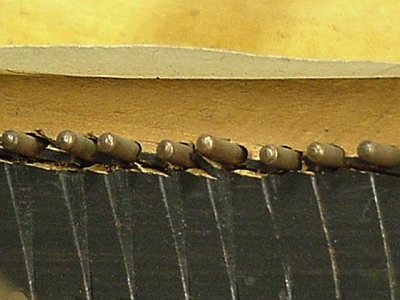
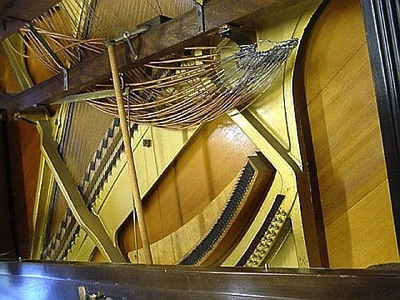
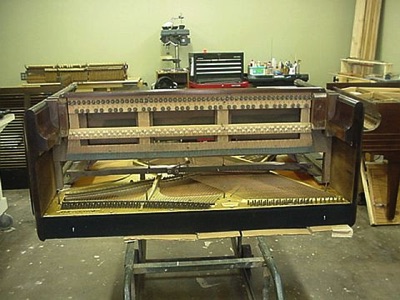
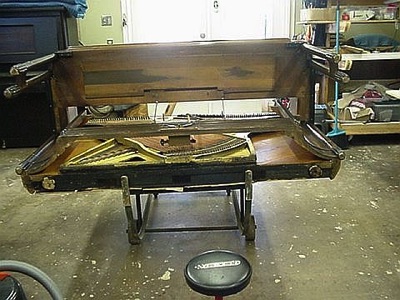
The grand style pedal lyre is attractive but obstructs access to the bottom of the piano.
The case has the usual marks of a church piano, compounded by the fact that the piano was built without casters.
Bottom view of the piano with our certified security agent and quality control inspector monitoring all activity.
Bottom board is removed to gain access to the bass string hitch panel prior to removing the bass strings.
Top view of the cleaned, sanitized keybed and plate.
The bass strings are unhitched and moved to the side for bass bridge repair.
A close view of the bass bridge shows the reason for repair.
Action reconditioning included a new set of bridle straps.
Reshaping the bass hammers took care of the mildew.
Regulating the action produced a remarkable improvement.
Reshaping the bass hammers took care of the mildew.
Regulating the action produced a remarkable improvement.
© Ward and Probst, Inc-1998-2014